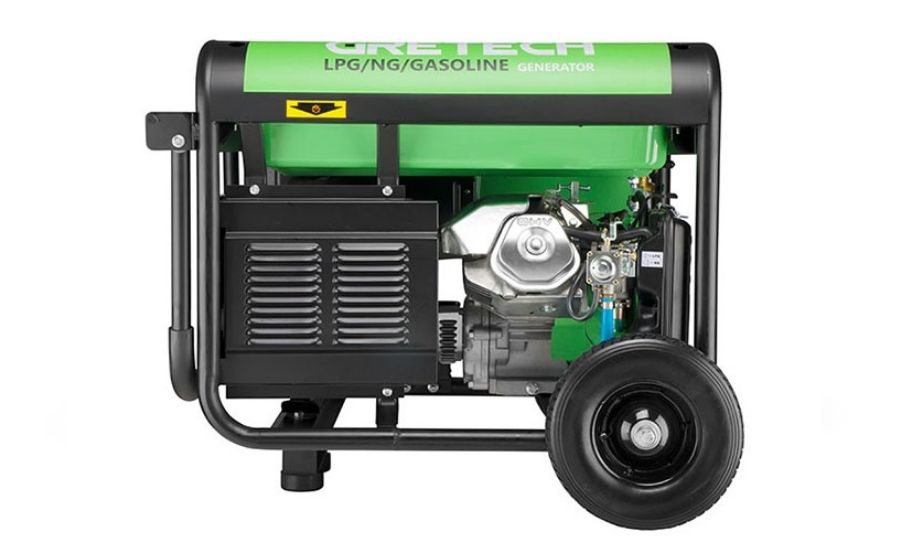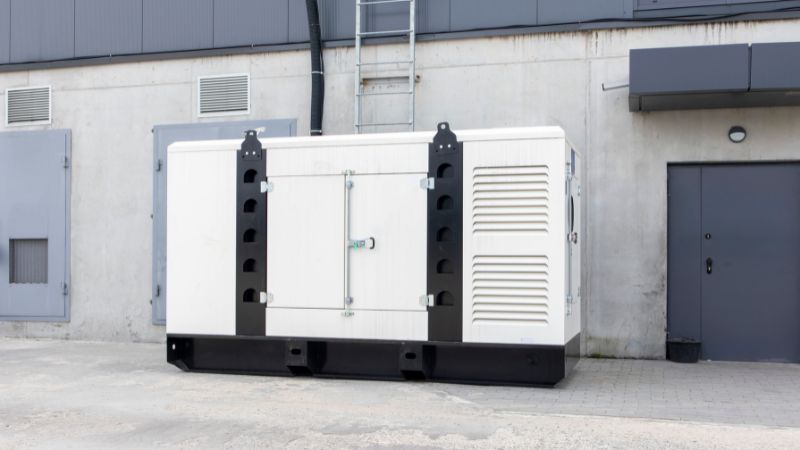
A generator without regular oil changes is like a car that never gets serviced – it’s headed for trouble. Most generator owners know oil changes are important, but many are unsure about timing and frequency. This uncertainty can lead to costly repairs or complete engine failure.
Getting the timing right depends on several factors. Understanding these factors and recognizing warning signs will help you keep your generator running smoothly when you need it most.
Why Generator Oil Changes Matter?
Your generator’s oil is its lifeblood – it lubricates moving parts to prevent damaging friction and overheating.
Clean oil performs some essential functions:
- Cleans – Traps and removes harmful dirt and debris
- Protects – Contains additives that prevent rust and corrosion
- Optimizes Performance – Maintains proper viscosity for smooth operation
As oil ages, it thickens and becomes sluggish, forcing your generator to work harder and burn more fuel. Fresh oil ensures easier cold starts and reduces wear, significantly extending your generator’s lifespan.
Regular oil changes are a small investment that pays big dividends in performance, efficiency, and longevity. Follow your manufacturer’s recommendations to keep your generator running at its best.
How Often Should You Change the Oil?
Several key factors determine how often you need to change your generator’s oil. Understanding these factors helps you create the right maintenance schedule.
Generator Type affects oil change timing.
- For portable generators, change oil after the first 20 to 30 hours of use. After that, change oil every 50 to 100 hours of operation. If you don’t use your generator much, change it every 6 to 12 months instead.

- For standby generators, the schedule is different. Change oil after the first 5 to 25 hours of use for break-in maintenance. Then change it every 100 to 200 hours of operation or every 1 to 2 years, whichever comes first.

Operating conditions impact oil life significantly. Hot weather makes oil break down faster. Cold weather can thicken oil and reduce its effectiveness. Dusty environments, high humidity, and poor air quality all contribute to faster oil contamination from moisture and airborne particles.
Frequently used generators and older units require more frequent oil changes. Daily operation accelerates oil breakdown, while aging engines consume more oil due to worn seals and internal wear.
Oil type determines change intervals. Conventional oil needs changing more often than synthetic oil. High-quality synthetic oils last longer under stress.
Load levels affect oil degradation. Running your generator at full capacity creates more heat and stress.
Signs Your Generator Needs an Oil Change
Your generator will show clear signs when it needs fresh oil. Watching for these warning signs helps prevent engine damage.
- Dark or Thick Oil: Check your oil color regularly. Fresh oil looks light brown and flows smoothly. When oil becomes black or stick, it needs changing right away.
- Metal Particles in Oil: Look for small metal bits in your oil. These particles show your engine parts are wearing down. Change the oil immediately if you see metal flakes.
- Unusual Engine Noises: Your generator should run quietly. If you hear knocking, grinding, or loud rattling sounds, check the oil.
- Oil Level Drops Quickly: Monitor how fast your oil level goes down. If you need to add oil more often than usual, the oil might be breaking down or burning off.
- Strong Burning Smell: Clean oil has almost no smell. Old oil creates a strong, burnt odor when the generator runs. This smell warns you the oil is overheated and worn out.
- Poor Engine Performance: Your generator might start slowly or run roughly with bad oil. It may also produce less power than normal.
Step-by-Step Guide to Changing Generator Oil
Step 1. Safety first. Turn off your generator and let it cool for 15-20 minutes. Never change oil while the engine is hot or running.
Step 2. Gather your tools:
- Fresh oil (check your manual for type)
- Oil drain pan
- Funnel
- Clean rags
- Gloves
Step 3. Locate the oil drain plug underneath your generator. Place your drain pan directly below it.
Step 4. Remove the oil filler cap on top of the engine. This helps the oil drain faster.
Step 5. Unscrew the drain plug with your wrench. Let all the old oil flow into your pan. This takes about 5-10 minutes.
Step 6. Check the drain plug for damage. Replace the washer if needed. Thread it back in by hand first, then tighten with your wrench.
Step 7. Find the oil dipstick. Clean it with a rag and keep it nearby.
Step 8. Add new oil slowly using your funnel. Pour in small amounts and check the level often.
Step 9. Check the oil level with the dipstick. The oil should sit between the minimum and maximum marks.
Step 10. Replace the oil filler cap and wipe down any spills.
Step 11. Dispose of old oil properly at a recycling center or auto parts store. Never pour it down drains or on the ground.
Step 12. Start your generator and let it run for a few minutes. Check for leaks around the drain plug.
Choosing the Right Oil
When changing generator oil, you need to select the correct type for your specific engine. Conventional oil works well for most generators and costs less than other options. It handles normal operating conditions effectively. Synthetic oil offers better protection in extreme temperatures. It lasts longer and flows better when cold, making it ideal for generators in harsh climates.
Check your owner’s manual for the recommended oil grade. Most generators use 10W-30 or 5W-30 oil. Never use automotive oil additives or mixed grades.
Key Oil Selection Factors:
- Operating temperature range
- Hours of use per year
- Storage conditions
- Manufacturer specifications
The oil filter needs replacement during oil changes. Buy the correct filter size for your generator model. A wrong filter can damage your engine.
Don’t forget the air filter as well. A dirty air filter makes your engine work harder and can contaminate new oil faster.
Buy oil in the right quantity. Most generators need 1-2 quarts per change. Having extra oil on hand helps with regular maintenance.
Quality matters more than price. Cheap oil can cause engine damage that costs far more than premium oil.
Conclusion
Regular oil changes are essential to keep your generator running smoothly and prevent costly damage. A little maintenance goes a long way in protecting your investment.
